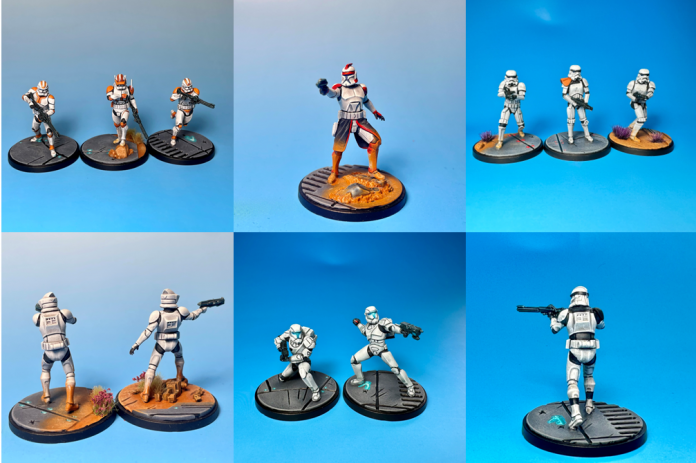If you’re a Star Wars mini gamer, chances are you’ve faced with having to paint a number of clonetroopers or stormtroopers. All that white armor can be intimidating, but we at Goonhammer are here to help. We’ve put together some different approaches in the hope that they will inspire you to get yours painted and on the table looking great!
The techniques here are directed towards the standard ‘mostly white’ color schemes for your stock standard Star Wars troopers. But of course you can apply what you learn here to other models as well. These aren’t meant to be an exhaustive review of techniques, so feel free to share your own recipes in the comments or on the Goonhammer Discord!
McBill
I’ve painted quite a few clones for Shatterpoint at this point. In fact, as of writing this, I’ve painted every Shatterpoint clone trooper and stormtrooper currently released. Luckily I’ve come up with a system that is embarrassingly simple but I think leads to some pretty good results. I’ve included some work in progress pics below but this is almost simple enough to not even need them. I also tested this technique on some Star Wars: Legion clone models I had sitting around.
The first, and most important, step: WHITE. PRIMER. Full stop. Please don’t make this more difficult than it needs to be. Use white primer, end of story. (For those in the U.S., I use Duplicolor Sandable White Primer.) You don’t need full, opaque coverage. Trying to get that will likely obscure detail on the models, so take it easy. I am usually happy after two thin coats. There will usually be a bit of a mottled appearance to the primer, but that’s ok. It’ll get covered up or act as shading/weathering. I wait at least overnight after priming before painting.
- First step, wash the whole model with GW Soulblight. Be pretty liberal with it but try to avoid it pooling as it can dry with a weird chalky effect you definitely don’t want. Here’s what they’ll look like when the wash is dry:
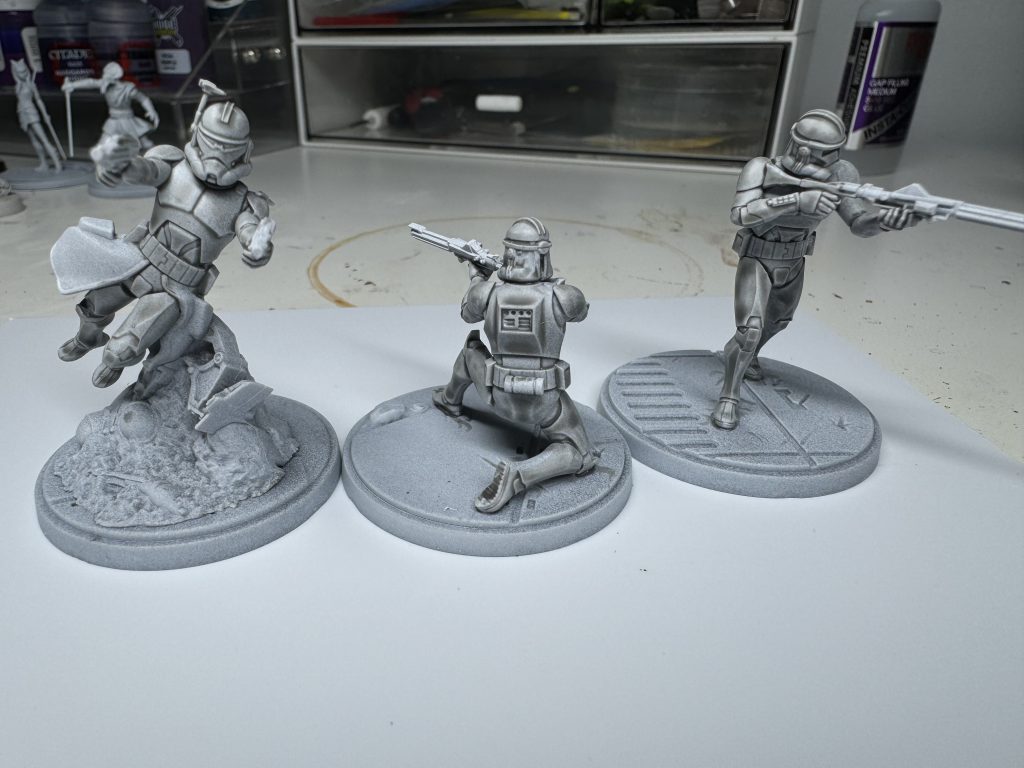
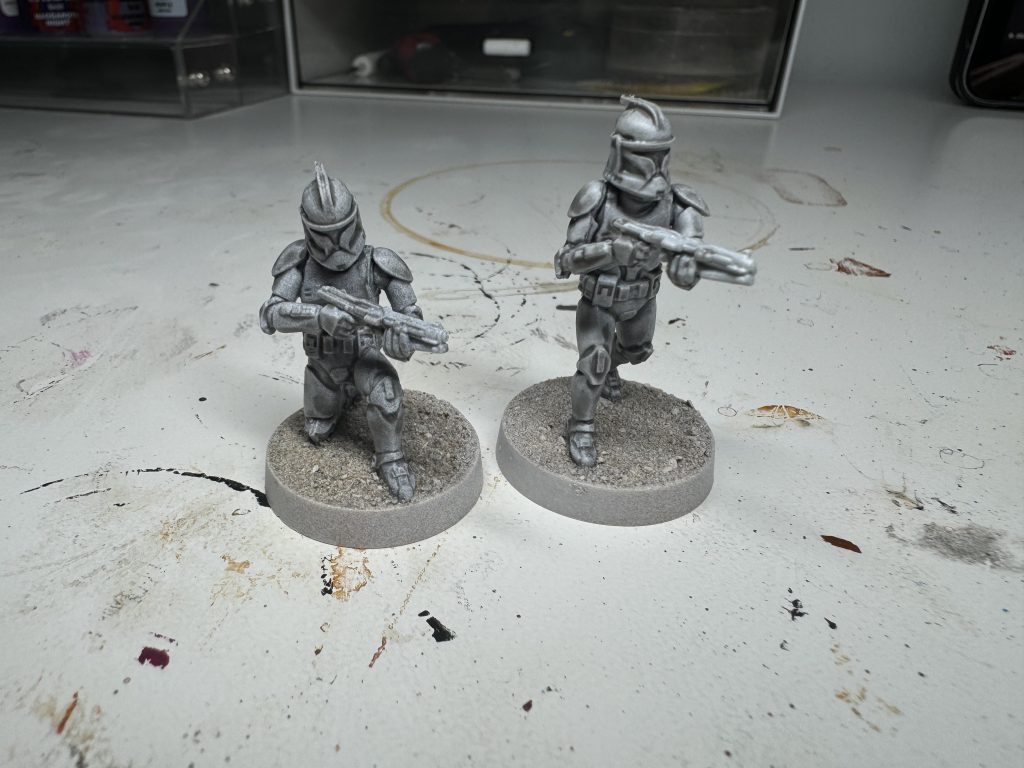
- When the wash is dry, heavily drybrush the whole model with an off-white shade. I use VMC Offwhite. GW Corax White is probably a good substitute. The key is to not use pure white. (You almost never want to paint with pure white in fact.) The models will look something like below. Notice the raised areas and edges are brighter and highlighted. That’s what you’re looking for here. If there are areas you think are still too grey, do more drybrushing. Remember also to look at your models from tabletop height, and not 6 inches from your face.
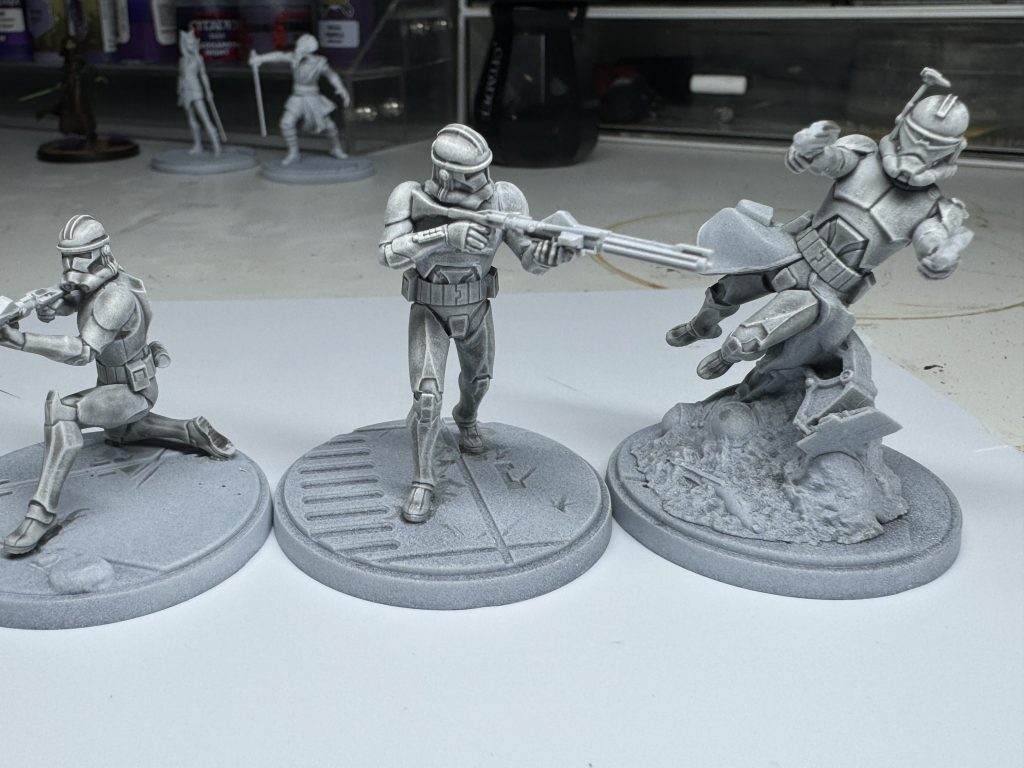

- If you’re happy with how the models look, stop. You’re done. No really. I did a couple more passes of drybrushing on the Legion clones (which is what is seen above) but as far as painting the white armor, I was happy with those smaller models. They would benefit less from painstaking painted highlights anyway. The mottled appearance and cheaper plastic made them look rougher to be sure, but I decided to lean into it- more on that below.
- For the Shatterpoint clones, I used the same Offwhite and carefully painted on highlights on edges and raised areas, and anywhere I felt a highlight would be appropriate. These admittedly don’t show well in the WIP pictures. Trust the process.
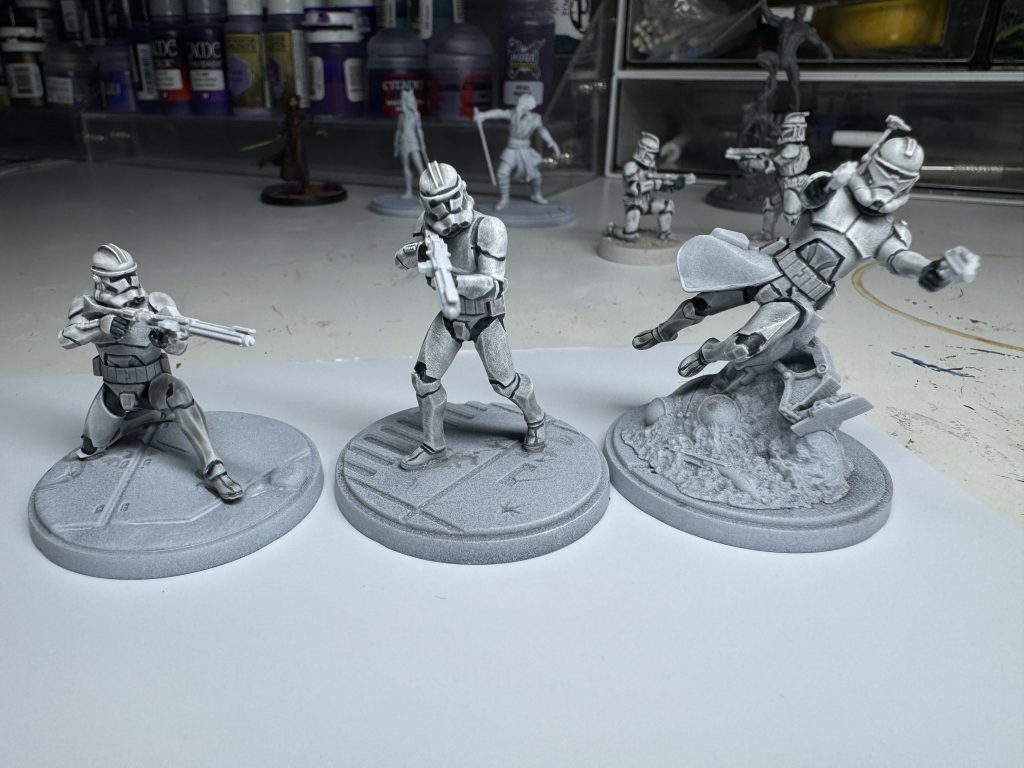
- Returning to the Legion clones, I tore of piece of foam and dipped it into a dark grey paint. I carefully sponged that on edges and any areas I wanted to weather up more. On the bigger spots, I dotted on a bit of metallic to represent paint being completely stripped away.
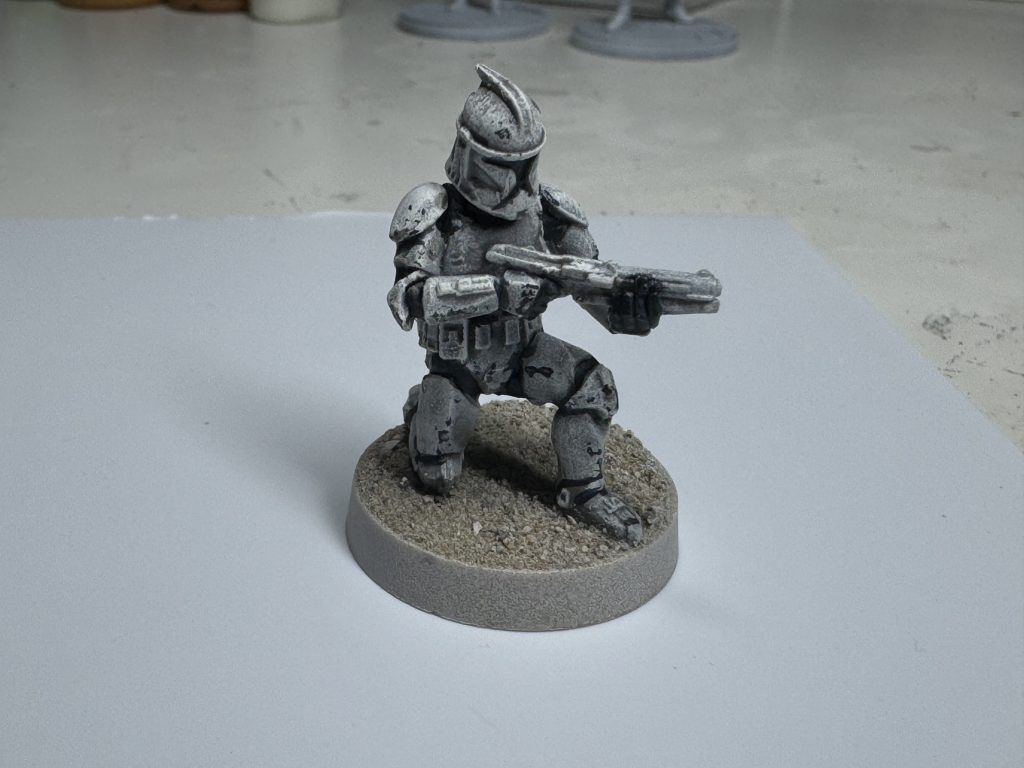
- With that, the armor for all the clones was done. If you want to represent a particular clone battalion, carefully apply the appropriate colors. For the Wolfpack clones below, I used Pro Acryl Blue Black, then carefully washed it with GW Nuln Oil. I then reapplied the Blue Black as highlights where necessary. I also cleaned up the white armor anywhere wash or the colored paint got where I didn’t want it to.
- I then carefully painted the body glove with a dark grey or very dark blue. For the Wolfpack clones, I actually used the same Blue Black just for funsies. I normally use a very dark grey like Scale 75 Eclipse Grey. This step will test your precision painting, as you are painting a very dark color while trying to not get it on all that white armor! Take your time, and remember mini painting is 90% about fixing your mistakes anyway. Small splotches can easily be drybrushed or painted over with Offwhite. If they’re larger or you’re having trouble, consider turning it into weathering!
- I painted the blasters with P3 Coal Black, a cool greenish, bluish black that can look very different depending on primer and what you put over it.
- I washed the body gloves and blasters with Nuln Oil. The blasters usually get 2-3 coats so most of that green/blue color is covered up but still shows up in spots as highlight.
- I like to blackline my models, meaning I paint a very thin line of black paint between different sections of the model. This is less apparent with the Wolfpack color scheme, but you can see the black outline between their belts and other armor pieces, for example. I like the effect and do it on all my models. But I am a crazy person, especially to do it around all that white armor. As always, do what works for you.
- From here, I’m effectively done other than any details like Wolffe’s helmet, etc. I finish by basing the models. I deliberately get my sandy colors on models that have that on their base. It ties them into the base nicely, and another way to cover any mistakes!
And here’s the end result with the Wolfpack and Legion clones:
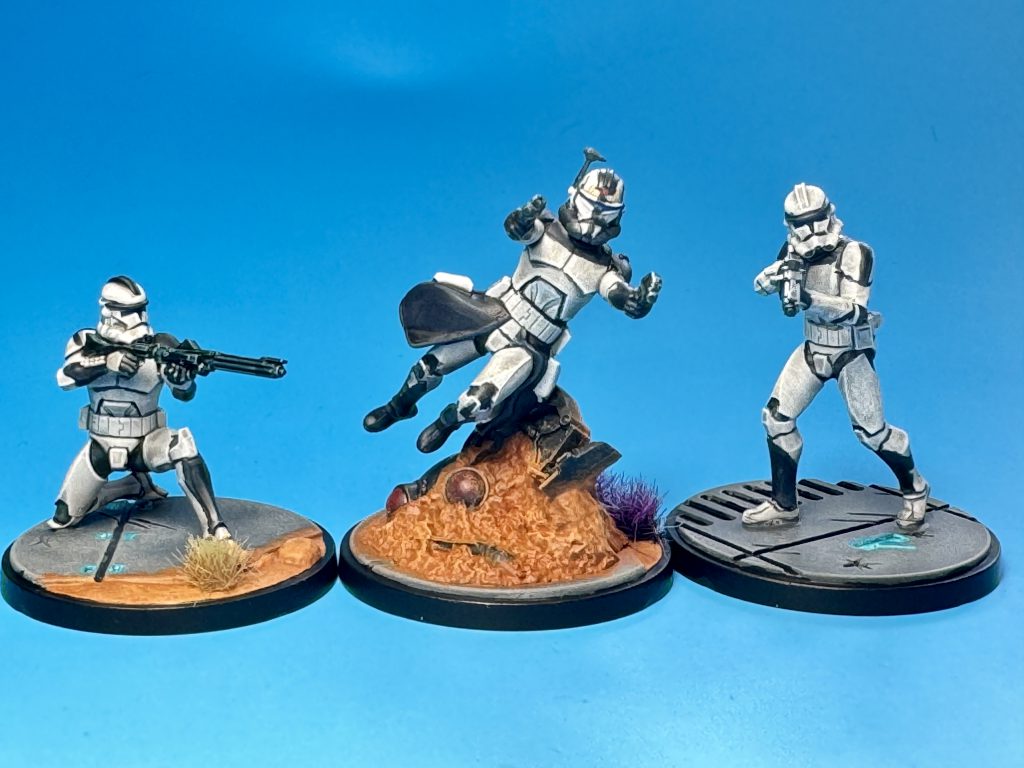
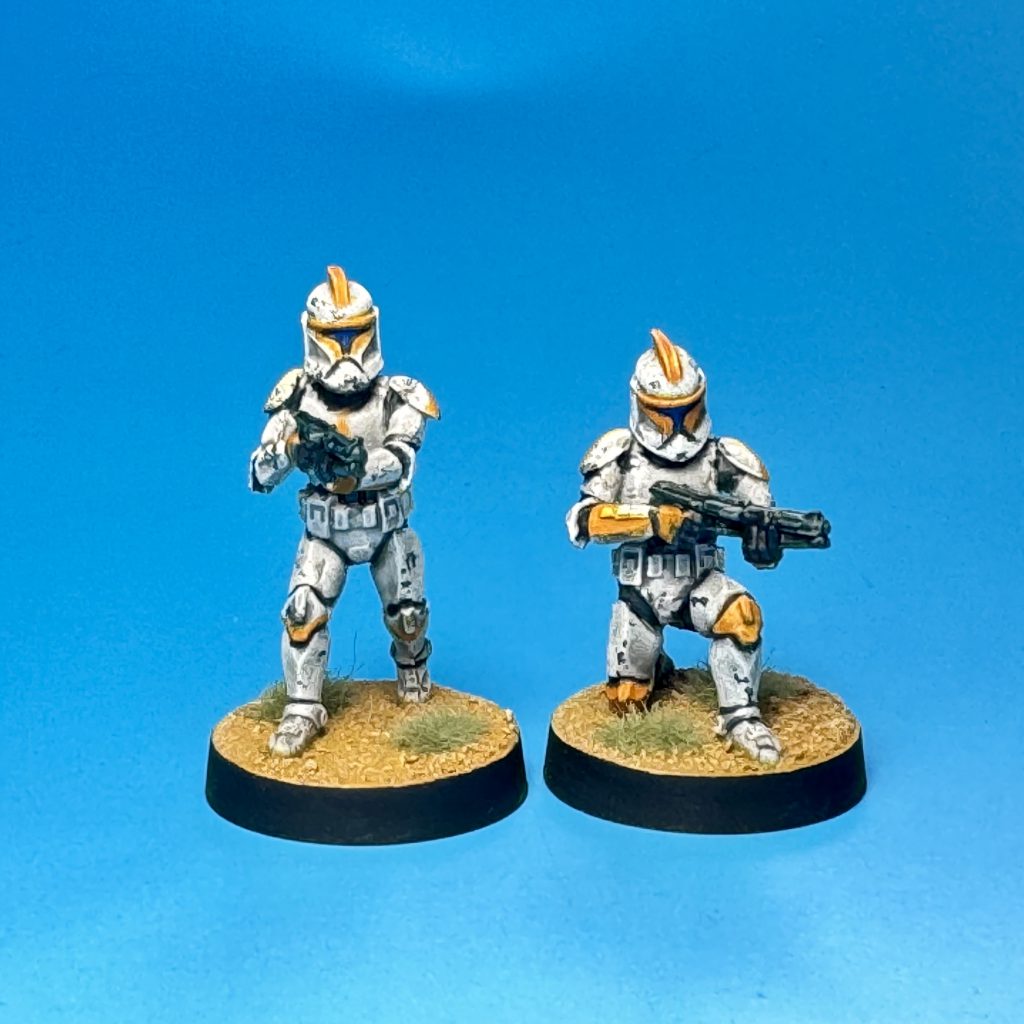
Tom Reuhl
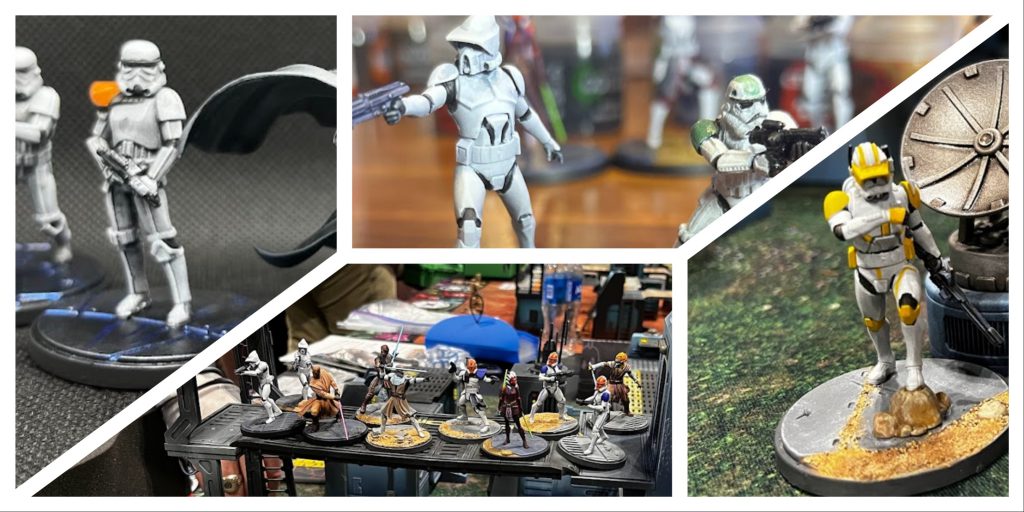
White and Yellow have always been the hardest colors for me to paint. After years in the painting community it seems to be the general consensus. Then you have a Legion (pun intended) of white Clone Troopers and Stormtroopers turning into the main troopers for Legion and Shatterpoint. I love stormtroopers as much as the last guy , maybe a little bit more (see below), but hopefully I can give you some tips to paint that white armor.

I always start my troopers with a white primer. I have used a few different but enjoy the Citadel White Scar, but utilize Rust-oleum flat white primer when in a pinch or the budget calls for it.
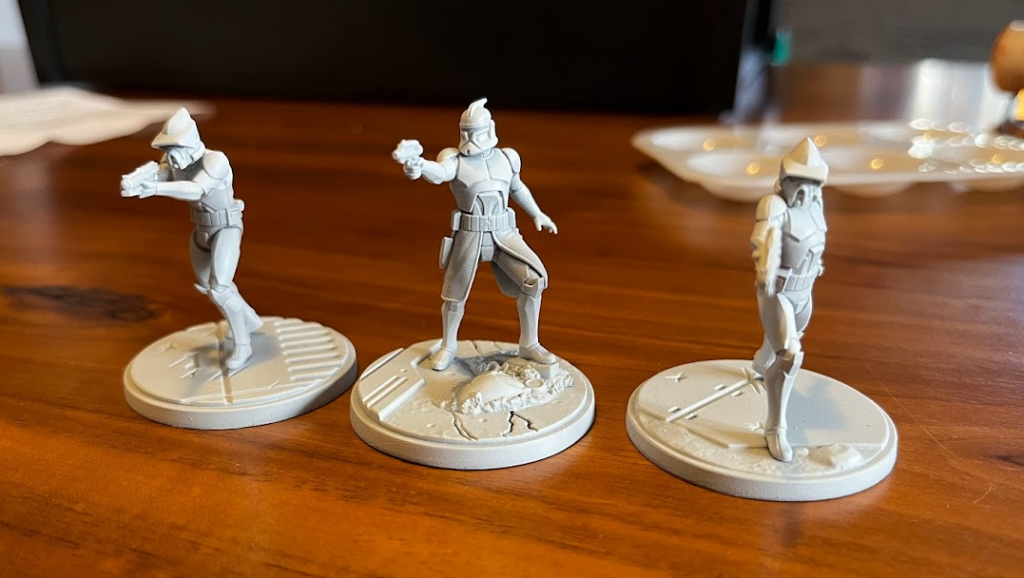
Then as the first base coat I have been hitting them with Citadel Basilicanum Grey Contrast Paint, depending on my mood and how ‘dirty’ I want them, I sometimes mix a 70/20 with water or medium since the contrast paints are already thin. You are just looking for white shadows here. Then taking my favorite white (currently), Golden SoFlat Acrylics Titanium White with a bit of Basilicanum Grey mixed in. This is to bring a base tone up from the shadows. I give them a nice dry brush using my largest Artis Opus brush.
I then use black ink or Citadel Contrast Black Templar to hit the details and guns.
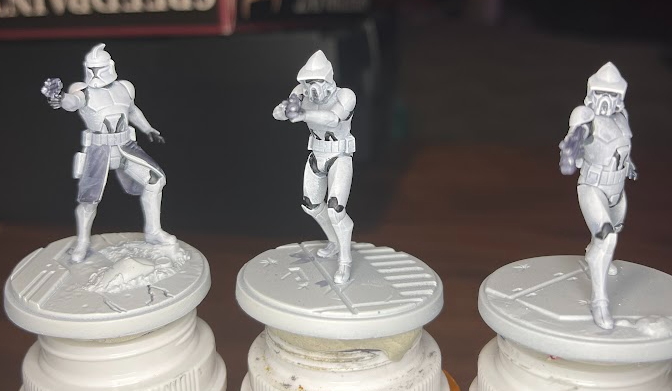
Then it’s clean up time! Trying to match your drybrush mix, you can go cover all the overpainting from the black, cleaning up blemishes and areas where the black should not be. Depending on your level of detail and cleanliness you will do this process a few times.
I will then dry brush a pure white over what I have already completed but this time using a very small dry brush. If you dry brush the edges of armor with the pure white, you will hit the black areas. This then means you have to go back and add more black! Then you may smudge something with black and have to go clean that up with white.
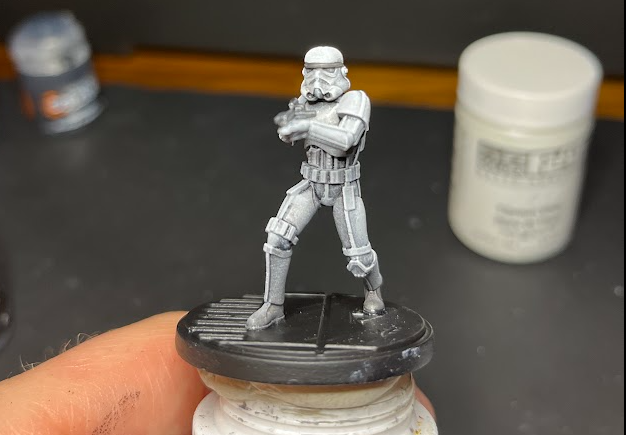
Some troopers have squad insignias or color patterns depending on their allegiance and that can be done near the end also. If something does not look right, just paint it white and start over.

The finished products look amazing on the battlefield. We are getting these troops table top ready, not winning awards. Two to five colors seems easy but these troopers come out to be some of the more complicated paint jobs you have to complete.
Raf Cordero
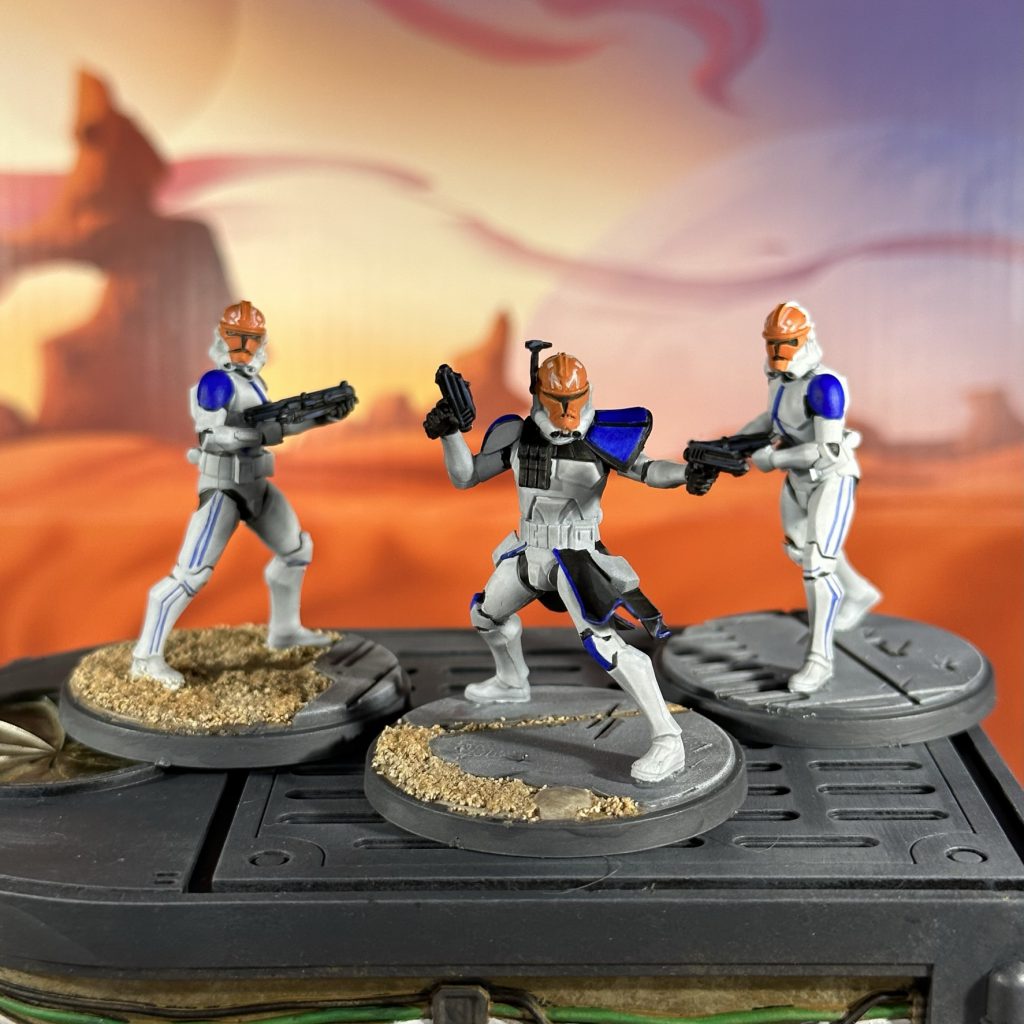
I discuss utilizing near-white, like Corax White and the use of Transparent white in areas you may want to glow or pop. You can view my more detailed instructions on painting Ahsoka and her 332nds here.
What about other troopers with armor that’s not that classic, fascist white you may be asking? Consider looking at other painting articles here at Goonhammer, such as this article featuring the Bad Batch, or this one with Dark Troopers and a Deathtrooper. And expect future articles exploring other trooper types, such as the upcoming snowtroopers and shoretroopers.
Thanks for reading!
Have any questions or feedback? Drop us a note in the comments below or email us at contact@goonhammer.com. Want articles like this linked in your inbox every Monday morning? Sign up for our newsletter. And don’t forget that you can support us on Patreon for backer rewards like early video content, Administratum access, an ad-free experience on our website and more.
